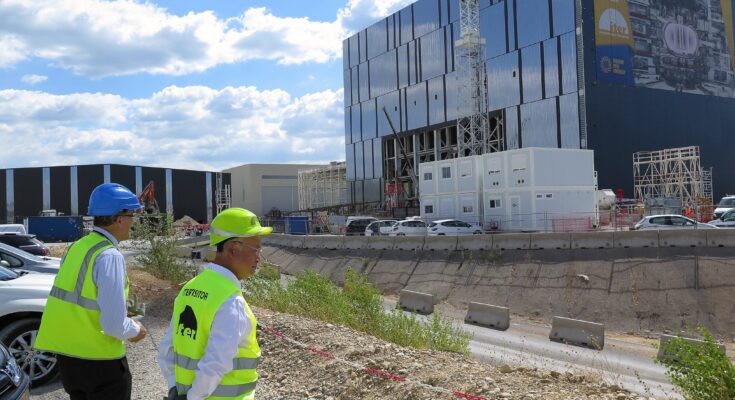Construction on the world’s largest nuclear fusion reactor is now complete, but the site won’t be operational for at least another 15 years.
The $28 billion fusion reactor in France, known as ITER, has had its final magnetic coil installed. However, the reactor itself won’t actually fully function until 2039 at the earliest.
The International Fusion Energy Project (ITER) fusion reactor, comprised of 19 huge coils looped into several toroidal magnets, was initially set to begin its first full test in 2020, but now scientists say it will start operating in 2039.
This mean fusion power—of which ITER’s tokamak is leading—is seriously unlikely to be here on time to be a solution for the climate crisis.
“Certainly, the delay of ITER is not going in the right direction,” Pietro Barabaschi, ITER’s director general, said at a news conference on Wednesday, July 3rd. “In terms of the impact of nuclear fusion on the problems humanity faces now, we should not wait for nuclear fusion to resolve them. This is not prudent.”
ITER’s nuclear fusion reactor is the collaborative work of 35 countries, including every state in the European Union, Russia, China, India, and the US. It houses the world’s most powerful magnet, making it capable of producing a magnetic field 280,000 times as strong as the one shielding earth.
Costs and delays to the nuclear fusions reactor
The site was not cheap. It was initially touted to cost around $5 billion and begin operation in 2020, but it has now been hit by several delays, and its budget surged beyond $22 billion, with an additional $5 billion proposed to cover other costs. These delays have led to a 15-year delay already.
Researchers have been making efforts to harness the power of nuclear fusion, the process by which stars burn, for over 70 years. By fusing hydrogen atoms to produce helium under very high pressures and temperatures, stars convert matter into light and heat, bringing about an enormous amount of energy without emitting greenhouse gases or enduring radioactive waste.
However, replicating the conditions inside the hearts of stars is not easy. The most common design for fusion reactors, the tokamak, works by superheating plasma before collecting it inside a donut-shaped reactor chamber with powerful magnetic fields, as reported by Live Science.
It has been extremely difficult to keep the lively and superheated coils of plasma in the right place long enough for nuclear fusion to take place, however. Natan Yavlinsky, a Soviet scientist, designed the first tokamak in 1958, but no scientists have since been able to build a reactor capable of putting out more energy than it takes in.
A huge difficulty is handling the plasma that’s hot enough to fuse. Fusion reactors require extremely high temperatures, as they have to operate at lower pressures than those within the core of stars.



